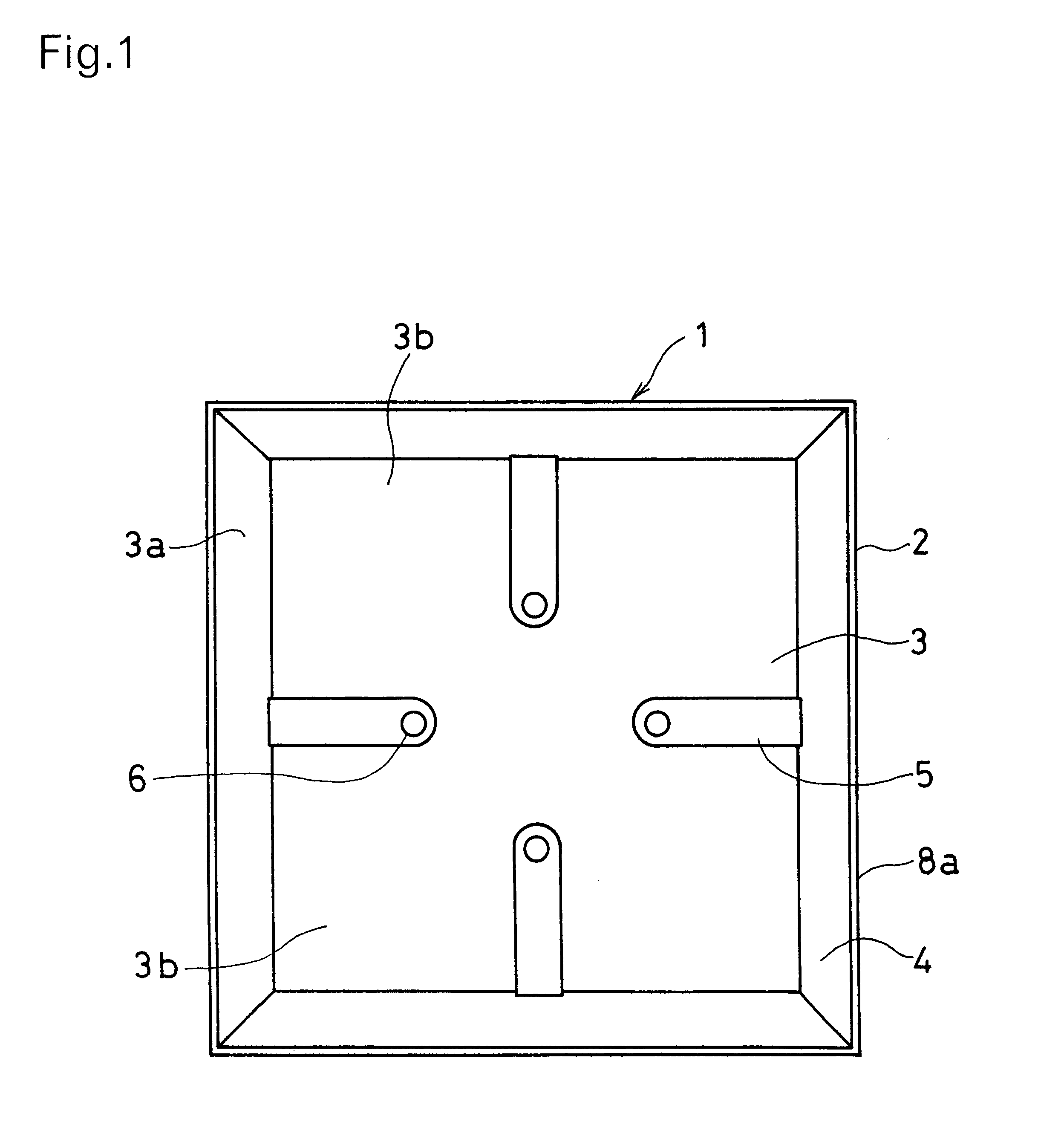Plant cultivation mat and method for laying the same
a technology for planting and mats, applied in turf growing, horticulture, agriculture, etc., can solve the problems of large-scale work, high cost, and inability to adopt equipment in existing buildings, and achieve the effect of reducing cost, short time period, and facilitating cultivation
- Summary
- Abstract
- Description
- Claims
- Application Information
AI Technical Summary
Benefits of technology
Problems solved by technology
Method used
Image
Examples
first embodiment
As shown in FIGS. 1 to 3, the plant cultivation mat 1 according to the present invention is made up of a square mat frame 2 consisting of a single cell 3 which is so depressed as to permit its top part to open, an inwardly recessed part 4 being formed at the lower part of the four side walls 3a of the cell 3.
Raised parts 5 are formed from the lower part of the side walls 3a of the cell 3 toward the center of its bottom part 3b, a water passage port 6 being perforated at an appropriate location in the upper end surface of each of the raised parts 5, situated in the vicinity of the center of the bottom part 3b. The inside of the raised part 5 is of such a construction that it constitutes a space in an inverted "U" shape, and has an opening 7 in a depressed groove, excess water being discharged outside through this groove-shaped opening 7. The shape, size, number, and so on of the water passage port 6 and the opening 7 are determined arbitrarily in accordance with the construction of t...
second embodiment
In the next place, explanations will be given as to the plant cultivation mat 1 according to the present invention. As shown in FIG. 7, the plant cultivation mat 1 is formed of a square mat frame 2, each of the four walls 2a of the surrounding side faces forming an inwardly recessed part 4 at its lower part. Within the mat frame 2, there is disposed a partition member 9 in a cross-shape, at a height not exceeding the upper end of the mat frame 2, i.e., at a height in flush with, or slightly lower than, the peripheral rib 8a of the mat frame 2, thereby defining four cells 3 in the mat frame 2.
Besides the example as illustrated in the drawing, the partition member 9 has its shape of intersection, grating, and others. This partition member 9 can also be molded as an integral part of the mat frame 2, or be disposed inside the mat frame 2 as a separate member, or may take any other arbitrary configuration. Such construction of the partition member 9 can be applied to the plant cultivatio...
second modified example
this second embodiment is of such a construction that, as shown in FIG. 9, the mutually adjacent two side walls 2a out of the four side walls 2a are inwardly recessed at their lower part to thereby form the inwardly recessed part 4, and that the other two adjacent side walls 2a form the mildly and inwardly tapered faces extending from their top to the bottom.
PUM
 Login to View More
Login to View More Abstract
Description
Claims
Application Information
 Login to View More
Login to View More - R&D
- Intellectual Property
- Life Sciences
- Materials
- Tech Scout
- Unparalleled Data Quality
- Higher Quality Content
- 60% Fewer Hallucinations
Browse by: Latest US Patents, China's latest patents, Technical Efficacy Thesaurus, Application Domain, Technology Topic, Popular Technical Reports.
© 2025 PatSnap. All rights reserved.Legal|Privacy policy|Modern Slavery Act Transparency Statement|Sitemap|About US| Contact US: help@patsnap.com



